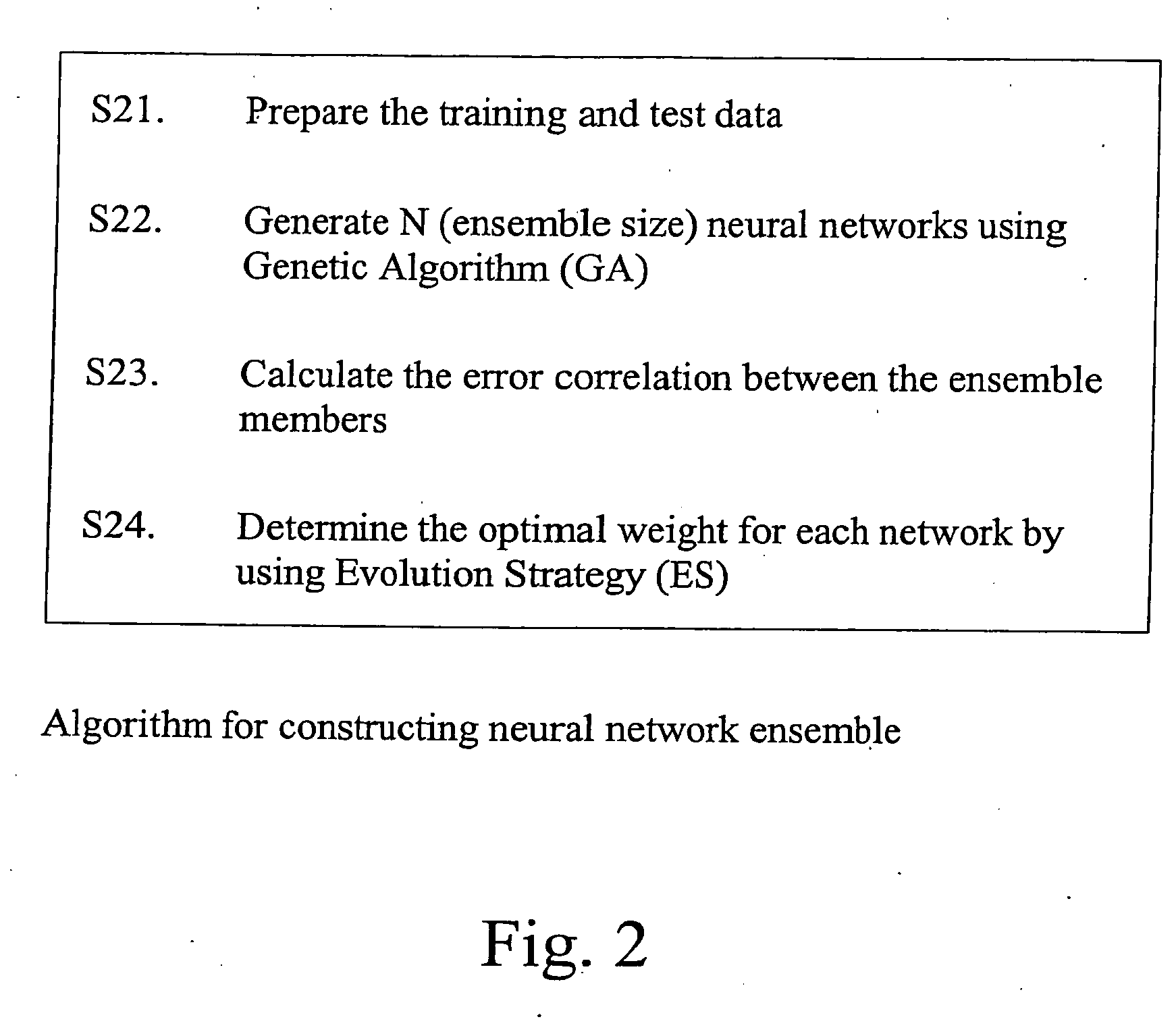Reduction of fitness evaluations using clustering techniques and neural network ensembles
a neural network and clustering technology, applied in the field of evolutionary computation, can solve the problems of difficult to apply evolutionary algorithms to solve complex real-world optimization problems, time-consuming fitness evaluations, and rough estimation, and achieve the effect of increasing the number of individuals to be evaluated using the original fitness function
- Summary
- Abstract
- Description
- Claims
- Application Information
AI Technical Summary
Benefits of technology
Problems solved by technology
Method used
Image
Examples
Embodiment Construction
[0037] When approximate models are involved in evolution, it is determined which individuals should be re-evaluated using the original fitness function to guarantee a proper convergence of the evolutionary algorithm.
[0038] According to a first embodiment of the invention, the k-means method is applied to group the individuals of a population into a number of clusters. For each cluster, e.g. only the individual that is closest to the cluster center is evaluated using the expensive original fitness function. The fitness of the other individuals is estimated using a neural network ensemble, which is also used to detect possible serious prediction errors. Simulation results from three test functions show that the present invention exhibits better performance than the strategy where only the best individuals according to the approximate model are re-evaluated.
Population Clustering Using the k-Means Algorithm
[0039] A variety of clustering techniques have been proposed for grouping simi...
PUM
 Login to View More
Login to View More Abstract
Description
Claims
Application Information
 Login to View More
Login to View More - R&D
- Intellectual Property
- Life Sciences
- Materials
- Tech Scout
- Unparalleled Data Quality
- Higher Quality Content
- 60% Fewer Hallucinations
Browse by: Latest US Patents, China's latest patents, Technical Efficacy Thesaurus, Application Domain, Technology Topic, Popular Technical Reports.
© 2025 PatSnap. All rights reserved.Legal|Privacy policy|Modern Slavery Act Transparency Statement|Sitemap|About US| Contact US: help@patsnap.com



